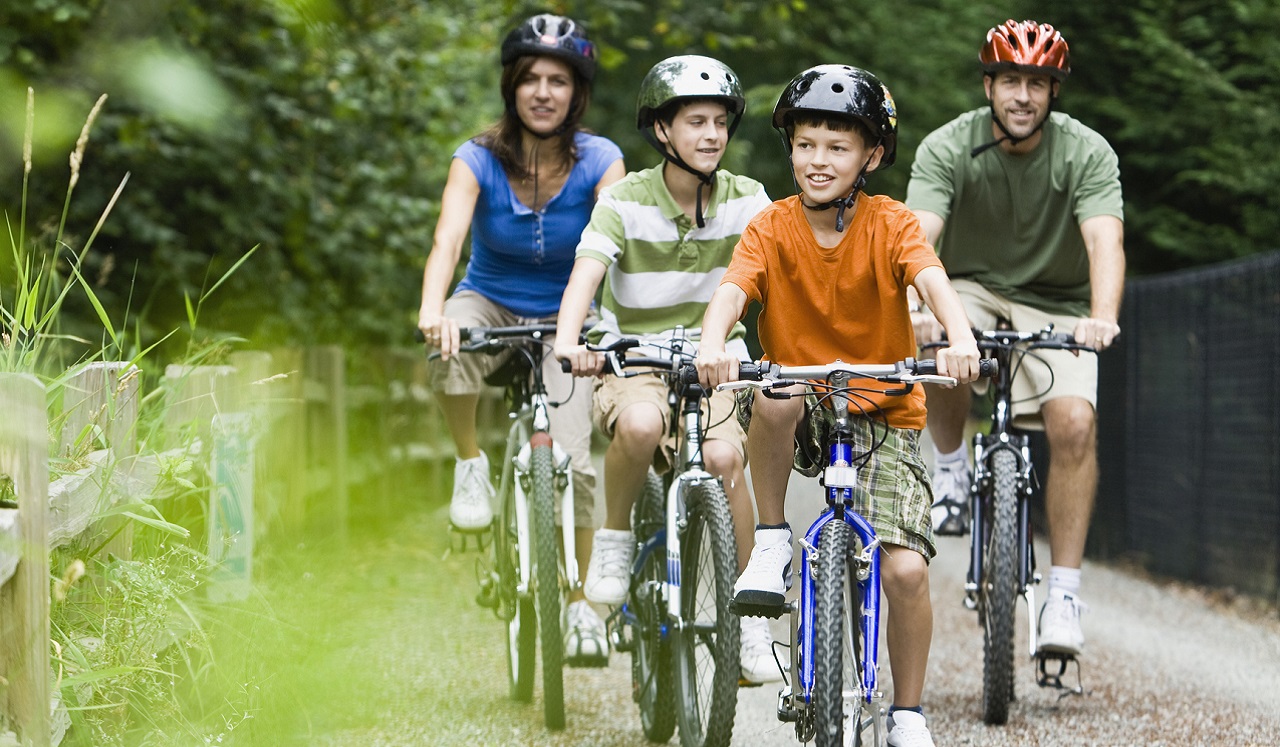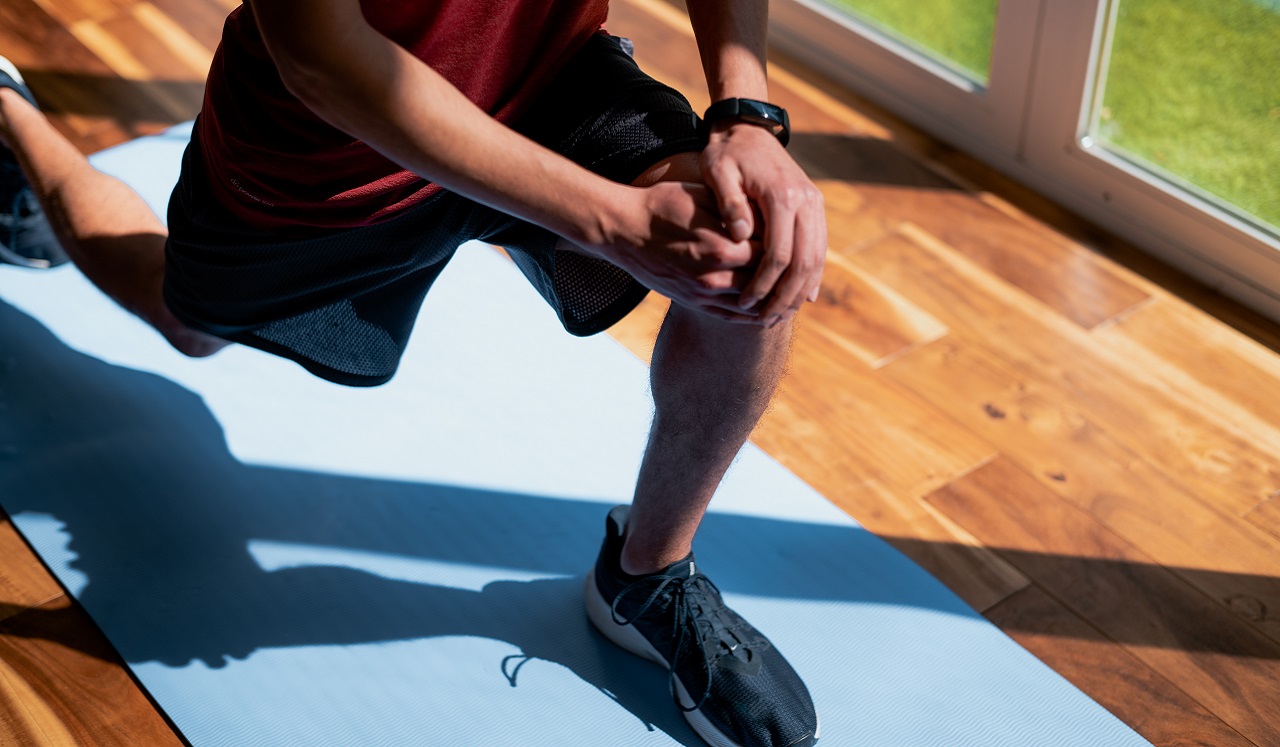Now that the school year is coming to a close it’s the perfect time for you – and your kids – to get outside.
“With better weather, there are tons of opportunities,” says Christopher Anyakorah, MD, MPH, family medicine and primary care physician at Memorial Hermann Medical Group (MHMG) Central Pearland.
Let’s take advantage of the warmer temperatures to get outdoors and get moving. Adults should amass 150 minutes a week of moderate physical activity, and kids should devote an hour a day to moderate-to-vigorous physical activity, says the U.S. Centers for Disease Control and Prevention.
Sometimes life gets in the way, causing you and your kids to fall short of those activity goals. If so, Dr. Anyakorah suggests ways to pump up the volume:
The Great Outdoors
What: Run, climb, hike and explore.
Why: “Power walks in the evening are great for heart health, lowering cholesterol and boosting general physical health,” says Dr. Anyakorah.
How: Follow your own and your family’s passions, whether it’s getting out and admiring flowers, taking wildlife photos, bird-spotting, sketching or using metal detectors to find treasures on the beach. Friendly competitions to spot butterflies or climb the highest can catch children’s interest. “You’ve got to engage kids at their level,” he says.
Where: Try your nearest park, dog park, the Houston Zoo, the Houston Arboretum and Nature Center, Sam Houston National Park or Galveston. You also can climb stairs at a stadium or run the track at a nearby school or fitness club.
Warning: If you’re trying out a new activity or resuming a physically demanding activity after a lengthy break, first check with your doctor to ensure it’s safe for you. “Get adequate instructions from your health care provider,” Dr. Anyakorah says. If you have been diagnosed with osteoporosis, do not engage in high-impact exercises, as they may lead to fractures.
Kid Play
What: Play Frisbee, catch, soccer or basketball. Or take your family on an after-dinner stroll or bike ride.
Why: Engaging in kid-friendly activities can help raise heart rates while reducing stress – and you’ll have fun as a bonus, he says. “Frisbee gets you moving, doing lots of cardiovascular exercise which is good for your heart. And it’s more entertaining than running on a treadmill.”
How: Make your children an offer they cannot resist. “If you tell your kids to go outside, they’ll say they’re tired,” he says. “But if you go out and play Frisbee, they may do it willingly for an hour or two. The key is to find things your kids enjoy more than video games.” A sweet shop or ice cream parlor at the end of a walk may entice the most deeply-rooted couch potato.
Where: Try your yard, driveway, block, local park or neighborhood.
Warning: Wear comfortable, sensible shoes with ankle support if needed.
Water Sports
What: Swim, dive, do water paddling or join a water aerobics class.
Why: You’ll burn calories while splashing and having a great time. Swimming is great exercise and can increase pulmonary function. And if you’re older or want to lose weight, you may find it easier to exercise in water. “The workout’s great, but because you’re buoyant in water, it’s easier on joints,” Dr. Anyakorah says.
How: Pay dues at the community pool or fitness club. Or offer babysitting in exchange for time in a friend’s pool.
Where: Your kids’ school, your local YMCA or a nearby natatorium are possibilities for places where you can swim. Most likely the YMCA also has Zumba and dance classes and tennis or pickleball courts. You also can head to a nearby lake or the beach to participate in aquatic activities.
Warning: Just because you’re in water and aren’t sweating doesn’t mean you don’t need to hydrate. Have a bottle of water nearby and drink up. “If you have diabetes or take diuretics, that is even more important,” Dr. Anyakorah says. “You can get dehydrated very fast.” Also, look for a lifeguard when using public pools, and make sure water is deep enough before diving in. Also don’t swim at night or by yourself —especially if you have a seizure disorder. If you’re prone to seizures, you should swim in a group setting.
Make Weekends an Adventure
What: Find a nearby park or recreation area and go camping, fishing or cycling.
Why: It’s fun, educational and engaging - the kids will be excited to join you for an adventure.
How: For fishing, use worms as bait—and younger kids will be hooked. You also can compete on how many fish you can catch. You need a license to fish in public waters in Texas. Be sure to follow wildlife rules related to catch-and-release when fishing.
Where: Head to Sam Houston National Park or another local or state park near you. It’s the 100th anniversary of Texas State Parks.
Warning: Have a safety plan if you go hunting, fishing or swimming in a lake or river. Heed warnings and signs, and ideally go only where others are present. Also, before entering a body of water, “Make sure the water is safe for whatever activity you do,” Dr. Anyakorah says. Avoid strong currents, which can put you at risk. “Also, know where the nearest medical attention is and have a safety plan in place.”
Chores
What: Clean house, mow the yard or tend the garden.
Why: You can relieve stress and release your frustrations on weeds or dust bunnies. “You also engage muscles and get your legs moving,” he says.
How: If you want to involve your children, start by getting little ones their own mini-mowers, or let them plant and weed their own garden patch. Crank up the fun by turning on the garden hose and getting wet. Children love competing, so maybe make a game of how many toys each person can pick up and put away.
Where: Your home or a relative’s home
Warning: Wear closed-toe shoes to cut grass, and before any vigorous activity, check with your doctor if you have heart ailments.
Get Your Daily Dose of Health & Wellness
Sign up to receive the latest articles in your inbox.

